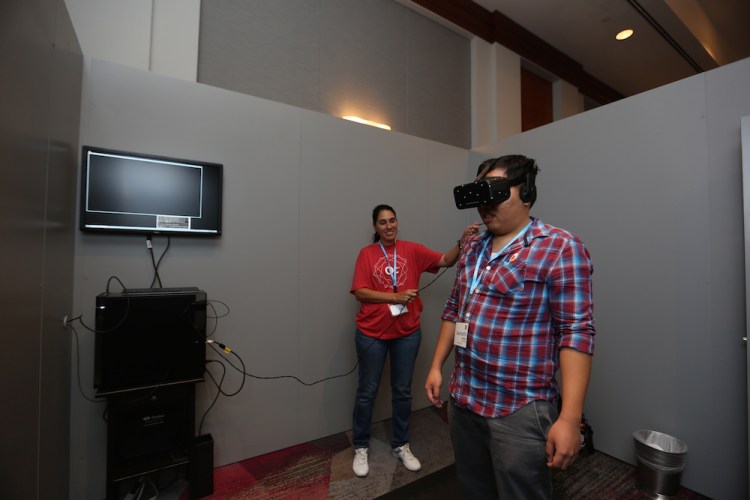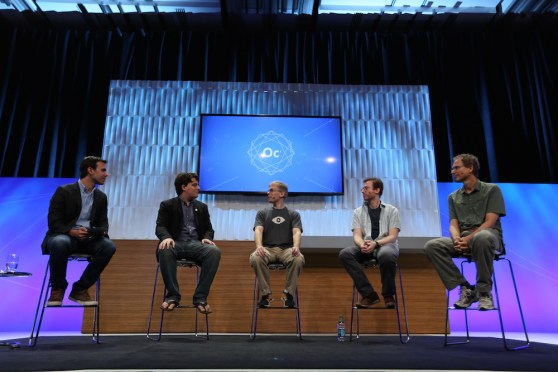Cresent Bay’s not quite there yet
As much as I enjoyed using Crescent Bay, the new prototype has flaws. Iribe said as much when he spoke to the press, but my problem with it goes beyond just graphical glitches. I can’t help but think we’re reaching a point where VR is hitting its own version of the uncanny valley. The better the headsets become at displaying virtual worlds, the more you realize how fake it is because you can’t reach out and touch them.
This was clear during the first part of the demo, when I was examining different pieces of equipment inside some sort of control room. I had this urge to touch them, but of course, all I could grab was air. Another section placed me at the edge of a tall building. Skyscrapers with massive advertisements surrounded me, and I could look down into the streets below. However, it only took two steps forward to break the immersion and realize that I’m not on a rooftop after all.
I’m not saying Oculus needs to simulate what it feels like to fall, but that gap between sight and touch is only going to become bigger as the visual and audio technology improves. Ideally, the Rift would come with some type of input device that’d provide haptic feedback and allow you to use your hands in VR.
Haptics is in a similar situation. At the same panel, Oculus chief scientist Michael Abrash said that haptic feedback is “the hardest problem” to solve. It might take a few years before we even get to the point where VR can give us a passable approximation of what we do in real-life.
Crescent Bay is an impressive feat, but it also shows just how much farther the technology needs to go before we can truly immerse ourselves in VR.
VentureBeat's mission is to be a digital town square for technical decision-makers to gain knowledge about transformative enterprise technology and transact. Learn More



